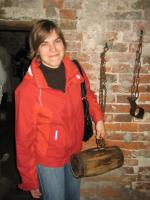,
Logsonomy - Social Information Retrieval with Logdata
HT '08: Proceedings of the Nineteenth ACM Conference on Hypertext and Hypermedia, стр. 157--166. New York, NY, USA, ACM, (2008)
DOI: 10.1145/1379092.1379123
Аннотация
Social bookmarking systems constitute an established part of the Web 2.0. In such systems users describe bookmarks by keywords called tags. The structure behind these social systems, called folksonomies, can be viewed as a tripartite hypergraph of user, tag and resource nodes. This underlying network shows specific structural properties that explain its growth and the possibility of serendipitous exploration.
Today’s search engines represent the gateway to retrieve information from the World Wide Web. Short queries typically consisting of two to three words describe a user’s information need. In response to the displayed results of the search engine, users click on the links of the result page as they expect
the answer to be of relevance.
This clickdata can be represented as a folksonomy in which queries are descriptions of
clicked URLs. The resulting network structure, which we will term logsonomy is very
similar to the one of folksonomies. In order to find out about its properties, we analyze
the topological characteristics of the tripartite hypergraph of queries, users and bookmarks
on a large snapshot of del.icio.us and on query logs of two large search engines.
All of the three datasets show small world properties. The tagging behavior of users,
which is explained by preferential attachment of the tags in social bookmark systems, is
reflected in the distribution of single query words in search engines. We can conclude
that the clicking behaviour of search engine users based on the displayed search results
and the tagging behaviour of social bookmarking users is driven by similar dynamics.
тэги
- 2.0
- 2008
- analysis
- bookmarking
- bookmarks
- dblp
- diapan
- diplom
- engine
- folksonomies
- folksonomy
- from:hotho
- from:jaeschke
- hotho
- hypergraph
- iin2009
- implicit
- information
- informationretrieval
- informationswissenschaft
- itegpub
- jäschke
- krause
- l3s
- log
- logdata
- logsonomies
- logsonomy
- myown
- network
- networks
- queries
- query
- retrieval
- sarwei
- search
- search-engine
- sna
- social
- socialtagging
- stumme
- tagging
- tagorapub
- tags
- tag_semantics
- topological
- tripartite



















